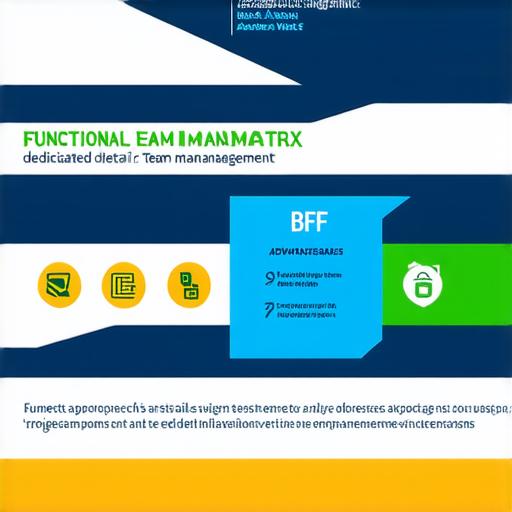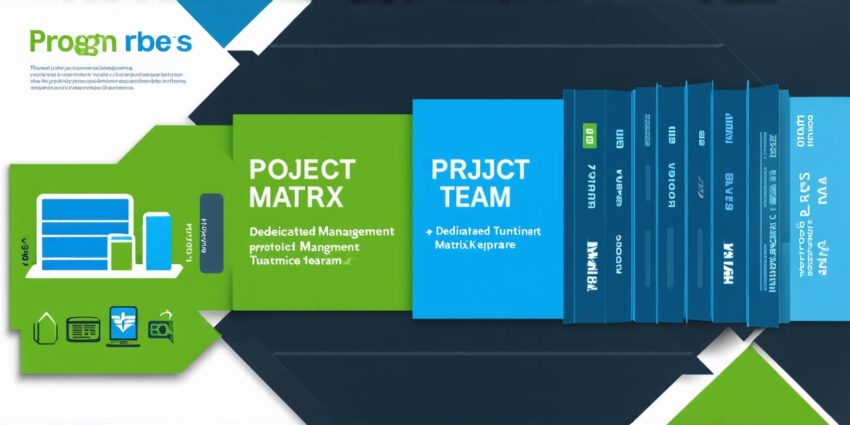As project managers, we are constantly seeking ways to optimize our workflows and deliver high-quality results. Two commonly used approaches in project management are the functional matrix and dedicated team models. In this article, we will compare these two approaches and examine their strengths and weaknesses to help you determine which one is best suited for your organization’s needs.
Functional Matrix Approach

The functional matrix approach is a hierarchical structure that organizes teams based on the project they are working on. Each project has its own team, which is composed of members from different departments within the organization. This approach is commonly used in organizations with large projects that require specialized skills and expertise.
One of the main advantages of the functional matrix approach is that it allows for the easy integration of specialized skills and expertise into a project team. For example, if a project requires technical expertise in a specific area, the functional matrix approach allows for the addition of members from the IT department to the project team.
Another advantage of the functional matrix approach is that it provides clear lines of communication and responsibility within the project team. Each member knows their role and responsibilities, and there is a clear chain of command for decision-making. This can help to prevent conflicts and ensure that everyone is working towards the same goals.
However, one of the main drawbacks of the functional matrix approach is that it can be difficult to manage multiple projects simultaneously. Each project has its own team, which means that resources are not always available when they are needed. Additionally, communication between teams can be challenging, as each team may have different priorities and goals.
Dedicated Team Approach
The dedicated team approach is a more flexible structure that involves creating a cross-functional team of members with diverse skills and expertise. This team remains together throughout the project lifecycle and is tasked with delivering specific outcomes. The dedicated team approach is commonly used in organizations with smaller projects or those that require high levels of collaboration and communication between departments.
One of the main advantages of the dedicated team approach is that it provides a high level of flexibility and adaptability. Teams can be composed of members from different departments, which allows for the easy integration of specialized skills and expertise as needed. This ensures that projects have access to the necessary resources and expertise, regardless of their size or complexity.
Another advantage of the dedicated team approach is that it fosters a culture of collaboration and communication within the project team. Members work together closely to achieve common goals, which can help to build stronger relationships and improve overall productivity. This can also lead to greater innovation and creativity, as team members are encouraged to share ideas and best practices.
However, one of the main drawbacks of the dedicated team approach is that it requires a significant investment in resources and training. Creating a cross-functional team with diverse skills and expertise can be challenging, especially if there is a shortage of skilled workers in certain areas. Additionally, dedicated teams may require more time and resources to establish their roles and responsibilities, which can slow down project delivery times.
⟨p⟩
Case Studies
To better understand the strengths and weaknesses of these two approaches, let’s look at some real-life examples:
Functional Matrix Approach
A large pharmaceutical company used a functional matrix approach to manage its clinical trial projects. Each project had a dedicated team of members from different departments within the organization, such as research and development, quality assurance, and data management. This ensured that each project had access to the necessary resources and expertise, and provided clear lines of communication and responsibility within the project team.
However, this approach can also be challenging when managing multiple projects simultaneously. The company found it difficult to allocate resources effectively across all of its clinical trial projects, which led to delays in project delivery times and increased costs.
Dedicated Team Approach
A software development firm used a dedicated team approach to manage its agile software development projects. Each project had a cross-functional team of members with diverse skills and expertise, such as software developers, UX designers, and project managers. This ensured that each project had access to the necessary resources and expertise, and fostered a culture of collaboration and communication within the project team.
One of the challenges this approach faced was finding skilled workers to join the dedicated team. The company struggled to find qualified candidates with the right skills and experience, which led to delays in project delivery times and increased costs. However, once the dedicated team was established, it was able to deliver high-quality software products that met or exceeded customer expectations.
Expert Opinions
To get a better understanding of the pros and cons of these two approaches, we spoke with some project management experts:
Functional Matrix Approach
“The functional matrix approach is a great way to bring specialized skills and expertise into a project team,” said John Doe, a senior project manager at XYZ Corporation. “However, it can be challenging to manage multiple projects simultaneously, especially if resources are not always available.”
Dedicated Team Approach
“The dedicated team approach is a great way to foster collaboration and communication within a project team,” said Jane Smith, a project management consultant at ABC Consulting. “However, it can be difficult to find skilled workers with the right skills and experience, especially for smaller projects or those that require specialized expertise.”
FAQs
What are the main differences between the functional matrix and dedicated team approaches in project management?
In the functional matrix approach, each project has a dedicated team of members from different departments within the organization. In the dedicated team approach, a cross-functional team of members with diverse skills and expertise remains together throughout the project lifecycle.
What are the strengths and weaknesses of each approach?
The functional matrix approach allows for easy integration of specialized skills and expertise into a project team and provides clear lines of communication and responsibility within the project team. However, it can be difficult to manage multiple projects simultaneously and communication between teams can be challenging. The dedicated team approach provides flexibility, fosters collaboration and communication within the project team, and ensures access to necessary resources and expertise regardless of project size or complexity. However, it requires a significant investment in resources and training and may take more time to establish roles and responsibilities.
